Welcome to Ceramic Review
Ceramic Review is the magazine for contemporary and historical ceramics, ceramic art and pottery.
Ceramic Review Issue 334
July/August 2025
Ceramic Review is the magazine for contemporary and historical ceramics, ceramic art and pottery.
July/August 2025
A unique exhibition exploring the history of Scotland’s industrial potteries will be held this summer. Ruth Impey reveals the inspiration and thinking behind the curation of 50 Pots.
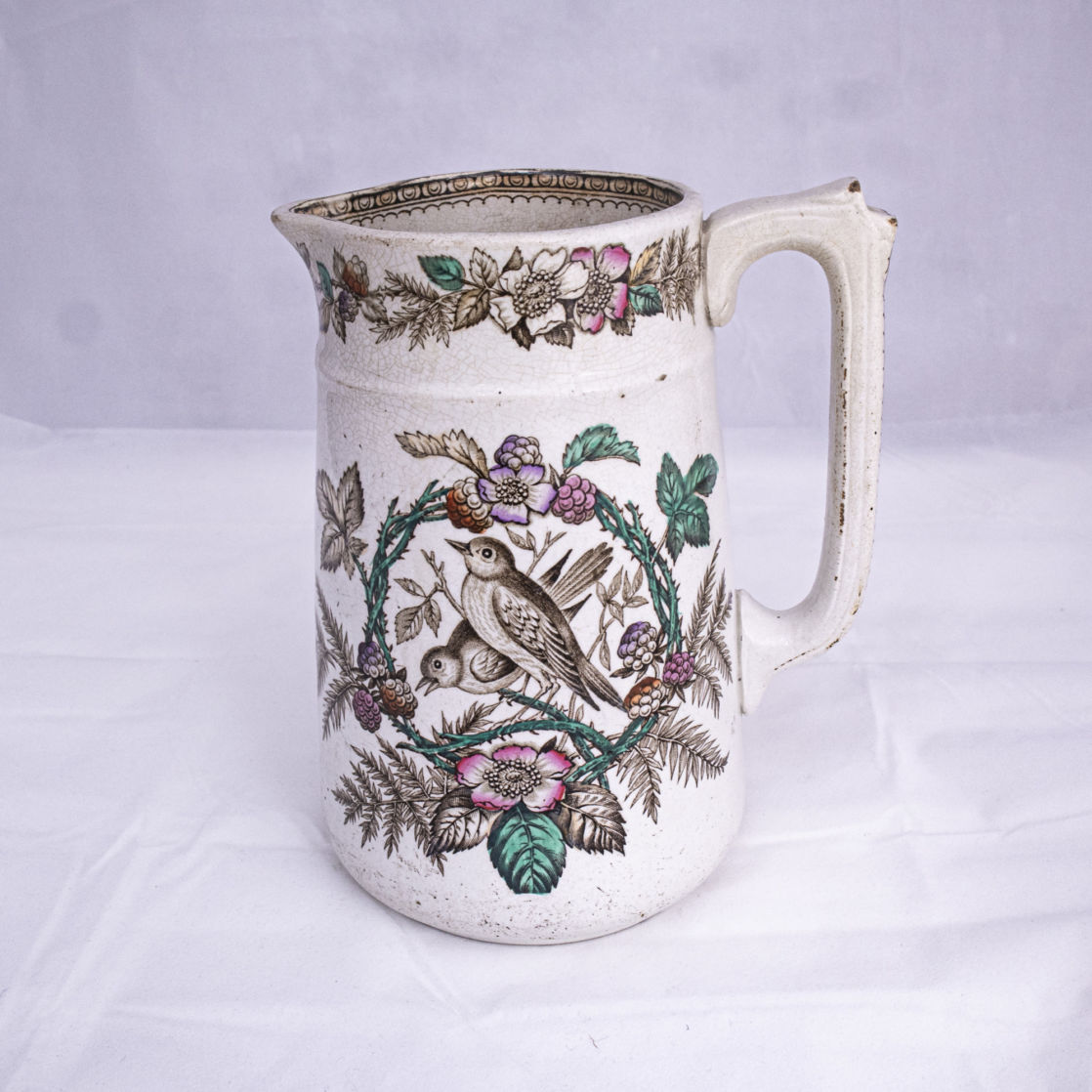
North British Pottery 'Bramble' Jug
Fifty pieces of pottery provide the central display for 50 Pots, one chosen for each year to represent the research, collecting and safeguarding of knowledge that has been carried out by the Scottish Pottery Society, which celebrates its golden anniversary this year. The pieces also represent the hands of the thousands of skilled workers employed in Scotland’s pottery industry for nearly 250 years, producing earthenware, stoneware and porcelain for national and international markets.
HIDDEN HISTORY
It is extraordinary that industrial ceramic production in Scotland dates back to 1748, when the Delftfield pottery was established on the banks of the River Clyde, only coming to an end in 1982, when Scotland’s last industrial pottery, Govancroft, finally closed its doors.
Scotland’s pottery industry was one of the first to create a successful international ceramic trade, supplying thousands of pieces of pottery to North American and Caribbean markets. This was due to the trade cycle Glasgow merchants had set up around the Atlantic involving tobacco, cotton, Virginia rum, Caribbean sugar and the transatlantic slave system, which exploited the labour of enslaved African people. The growth and scale of Scotland’s pottery industry was vast and at its height it operated a global trade network supplying transferware, spongeware, and Bristol-glazed and salt-glazed stoneware.
By the late 19th century, Glasgow was the largest stoneware producer in Britain. What is extraordinary, however, is that so little is known about Scotland’s ceramic history in the public sphere; pottery it seems is Scotland’s ‘ghost’ industry. Virtually all traces of the industry have been wiped from the landscape in Glasgow, the major centre for the production and export of Scottish ceramics during the 19th century boasting over 100 kilns, and general knowledge of the pottery industry is lost to time.
One of the main aims of 50 Pots is to reconnect the people of Scotland to this important part of their cultural heritage: their ceramic craft, design and trading history.The exhibition is the first time that pieces representing industrial potteries from the north, east and west of Scotland, including Glasgow, Greenock, Aberdeen, Bo’ness, Portobello, Prestonpans and Kirkcaldy, will be exhibited together to reveal the scale, range and global reach of Scotland’s pottery industry.
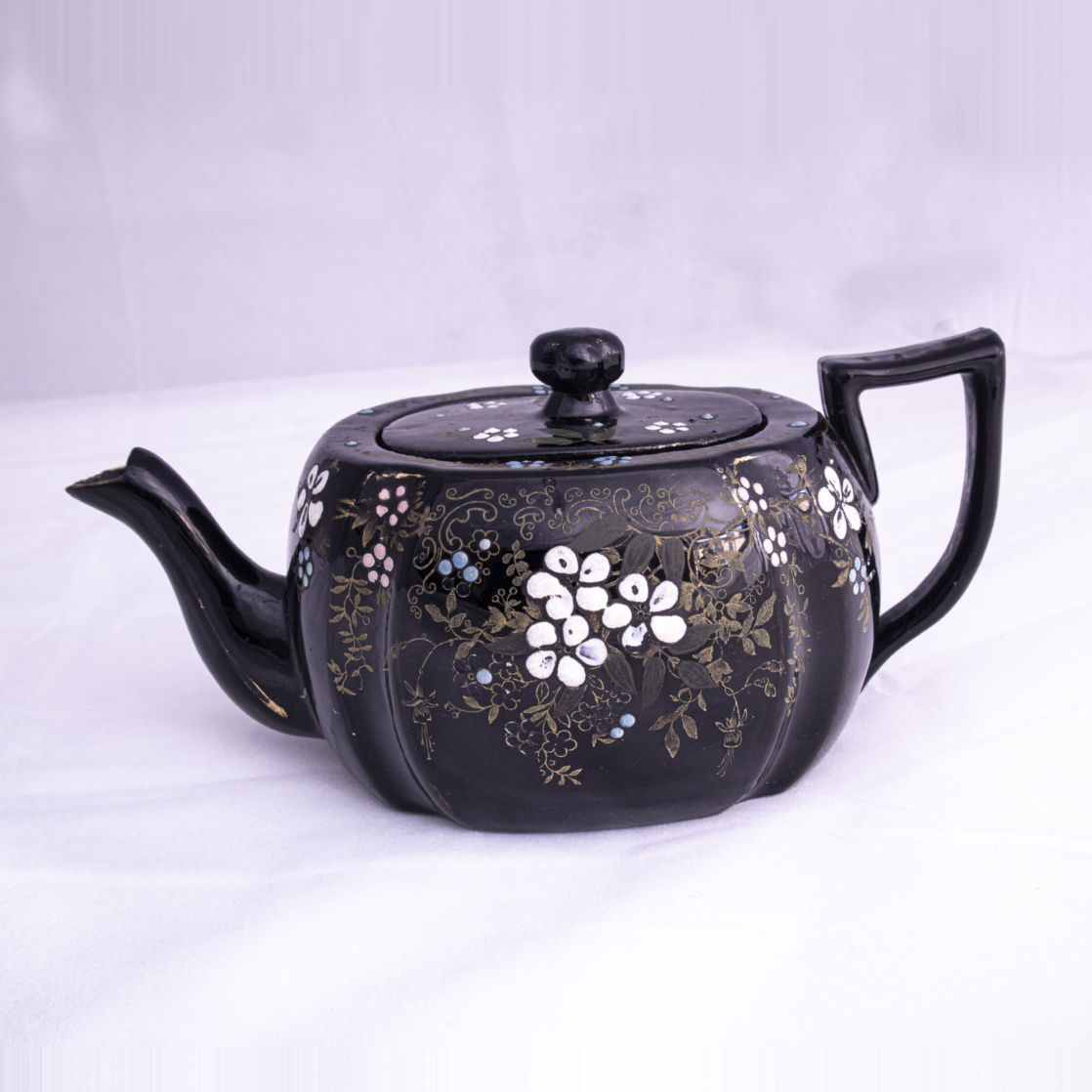
Alloa Pottery Teapot
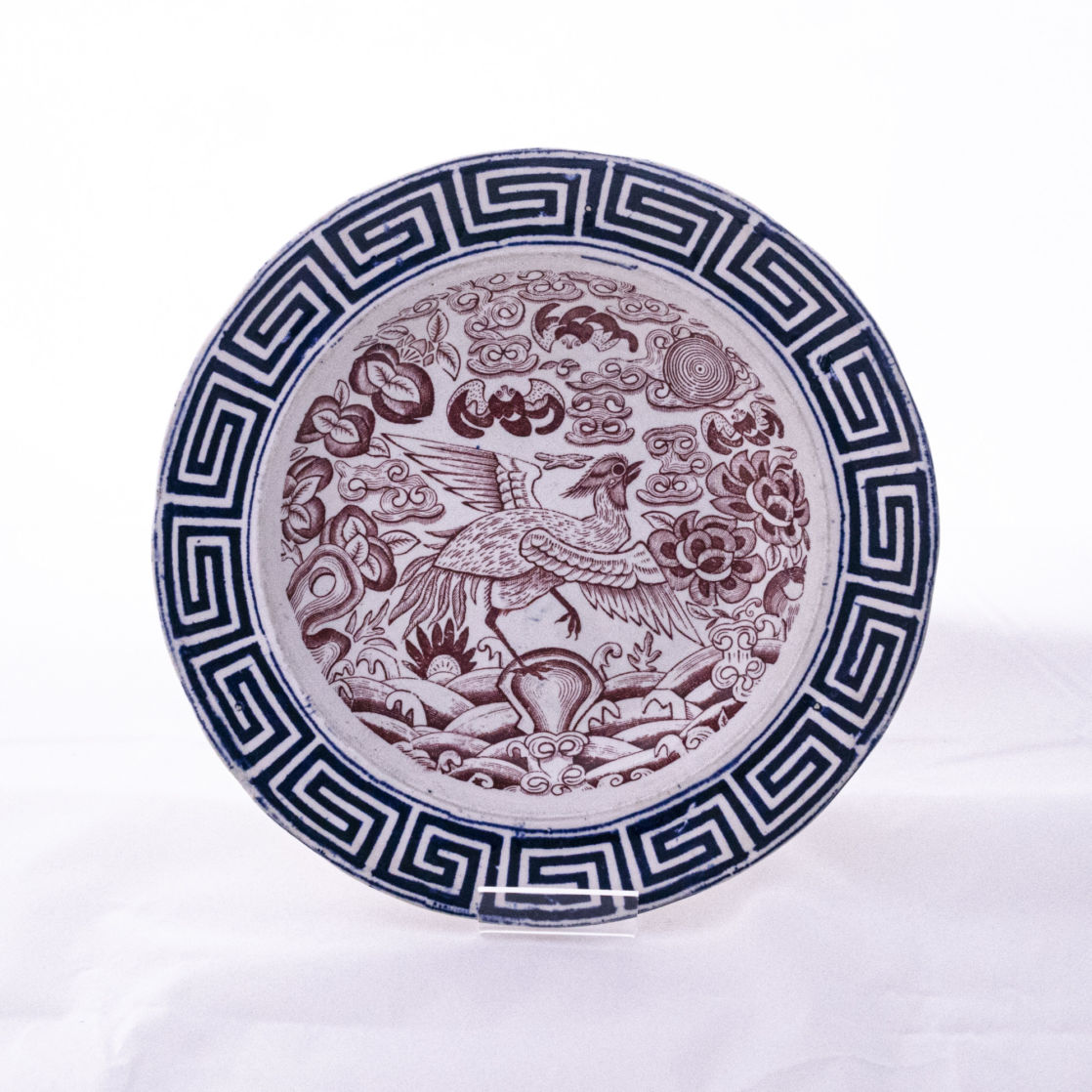
Brittania Pottery 'Canton'
SHARED STORIES
Uncovering and telling the stories of workers and people involved in the Scottish pottery industry is an integral part of the thinking behind the exhibition. Its aim is to allow visitors to connect to the human narratives involved in the craftmanship of the industrial pottery process and identify with this dislocated history.
The life of a Scottish pottery worker is revealed in an early account of the decorating processes at the Verreville Pottery and is displayed alongside a Verreville spongeware bowl. When she was interviewed in 1976, one such worker, Mrs McGovern, revealed the decorating skills and techniques she employed working at the factory between 1913 and 1916. Her memory of spongers, guilders, painters, mould-makers, transfer-printers, throwers, saggar-makers and kiln men, combined with the memories and experiences of some of the last workers at Govancroft bring Scotland’s pottery story to life.
Shared stories between Scotland and Staffordshire potteries through workers, owners, and ideas exchanged through clay and glaze recipes, form an important part of the exhibition’s narrative. Adverts in the Staffordshire Advertiser, The Pottery Gazette and pieces from the Caledonian and Grosvenor Pottery, attest to this intertwined story. Scottish potteries advertised for and sought out workers from The Potteries to help kick-start the industry north of the border. Frank E. Wedgwood described this historic relationship as ‘brother potters’ in 1926. Indeed, the important links between Stoke-on-Trent’s and Scotland’s potteries are only beginning to be understood.
In light of recent ceramic curator cuts and reduced museum access in Stoke-on-Trent, the importance of understanding this shared contribution to the UK’s ceramic design, production, craft skills and entrepreneurship is even more paramount. It is hoped the exhibition will galvanise more research and attention to this relationship, to fully understand and celebrate the interconnectedness of these parallel industries and Scotland and Staffordshire’s shared clay heritage. A story that traces the rise and fall of the Scottish pottery industry begins a new chapter through this exhibition.

Possil Pottery Tennents Brewery Beer Bottle
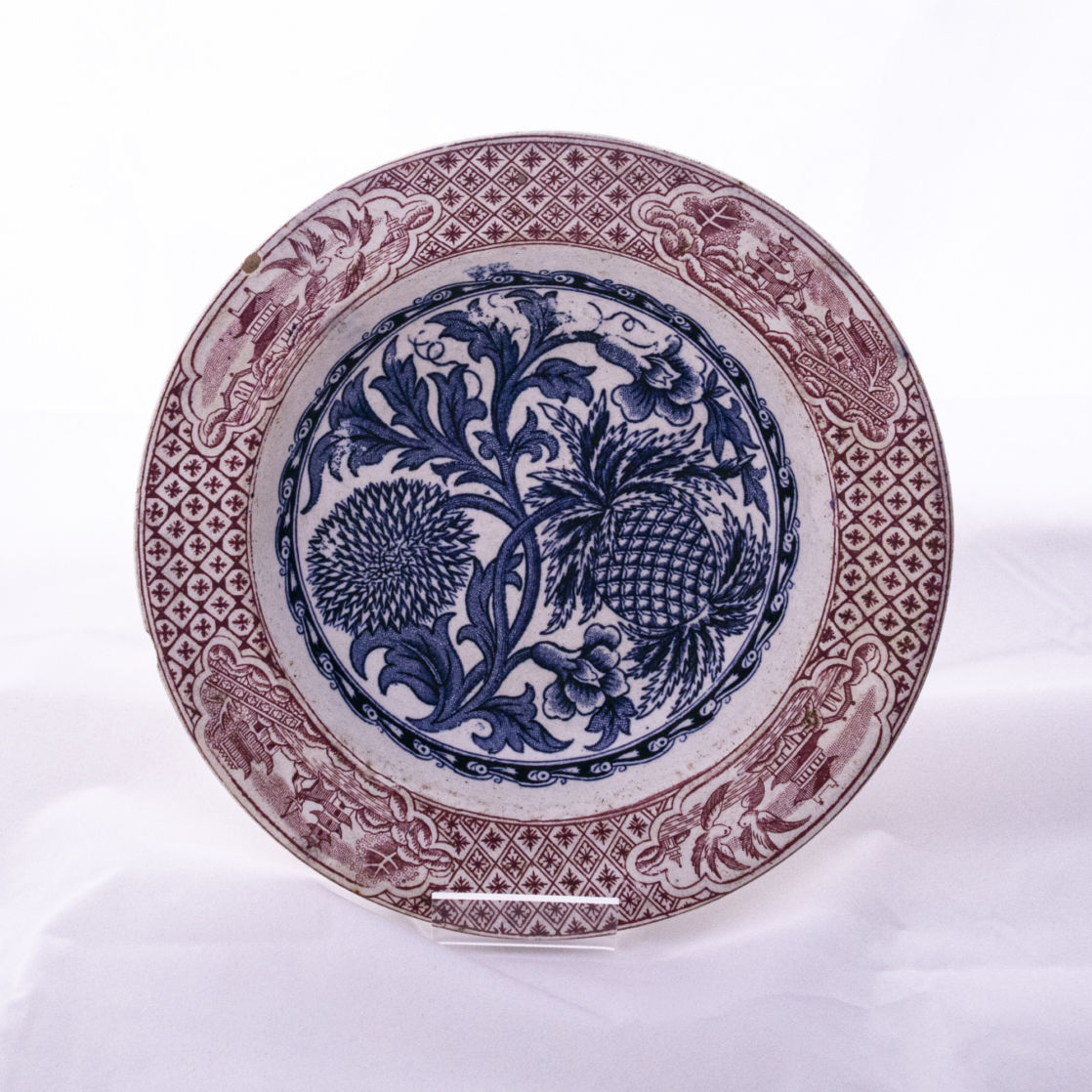
Bells Pottery 'Dhurian and Nanas'
GLOBAL CONNECTIONS
The number of countries reached by Scotland’s pottery industry and the intercultural links created as a result, span the globe. Communicating to visitors the global reach and historic cultural connections made as a result of Scotland’s pottery industry was a central part of the thinking behind the exhibition. The range of ware produced for export markets is reflected in the 50 pieces chosen for the displays.
Scottish industrial ceramic designers and manufacturers created export designs that were specifically made to appeal to aspects of their destination country’s national identities and aesthetic sensibilities. For example, designs with contrasting colours including back stamps written in Jawi, the Malay form of Arabic script, were produced for the Malay-speaking Muslim communities of South-East Asia. Designs incorporating beavers and maple leaves were made for Canada, with emus and kangaroos for Australian markets. Colourful spongeware was also produced with geometric and fruit motifs for Indonesia, India, Malaysia and Sri Lanka.
The list of export countries is quite extraordinary, with Scottish pottery manufacturers recognising and responding to gaps in global markets. This creativity, design thinking and entrepreneurship even extended to Tennent Brewery’s ownership of Possil pottery to supply bottles for their important Cuban markets with Scotland’s totem ‘T’ stamped on stoneware bottles made in Glasgow and sent to the Caribbean.
FUTURE VOICES
Work produced by City of Glasgow College applied arts students (pictured right and below) provides an integral and dynamic aspect to the show. Inspiring future ceramicists is key, demonstrating how Scotland’s pottery history can be part of a living heritage.
It was fantastic that City of Glasgow College wanted to get involved. Twenty students were briefed to make and decorate a press-moulded plate, they were also invited to take part in a commemorative tile competition, providing a contemporary response to Scotland’s historic pottery industry. The chosen tile represents Scotland’s ‘ghost industry’ and will be donated to Maryhill Burgh Halls to complete the set of historic industry panels that are currently on display there.
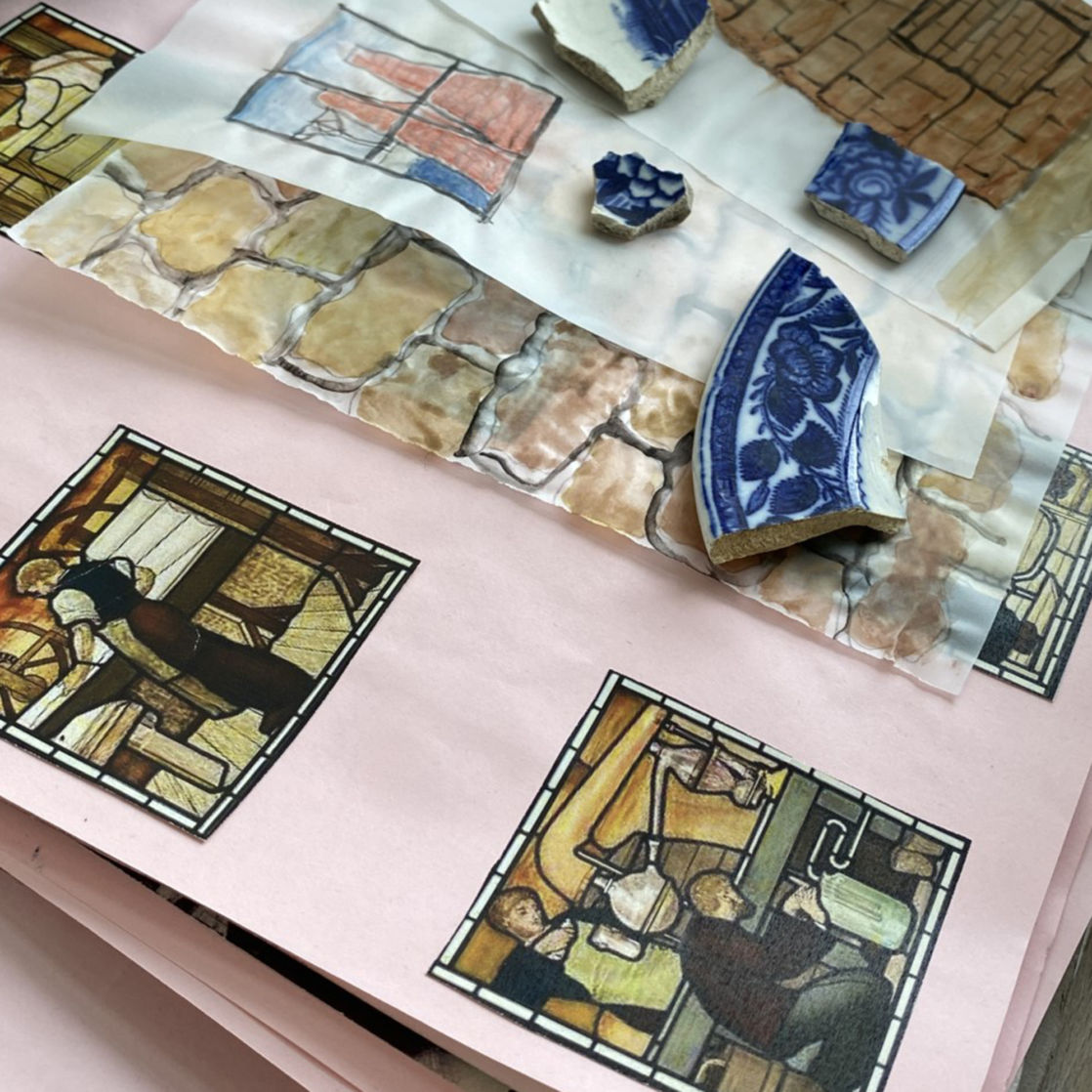
Glasgow City College Tile
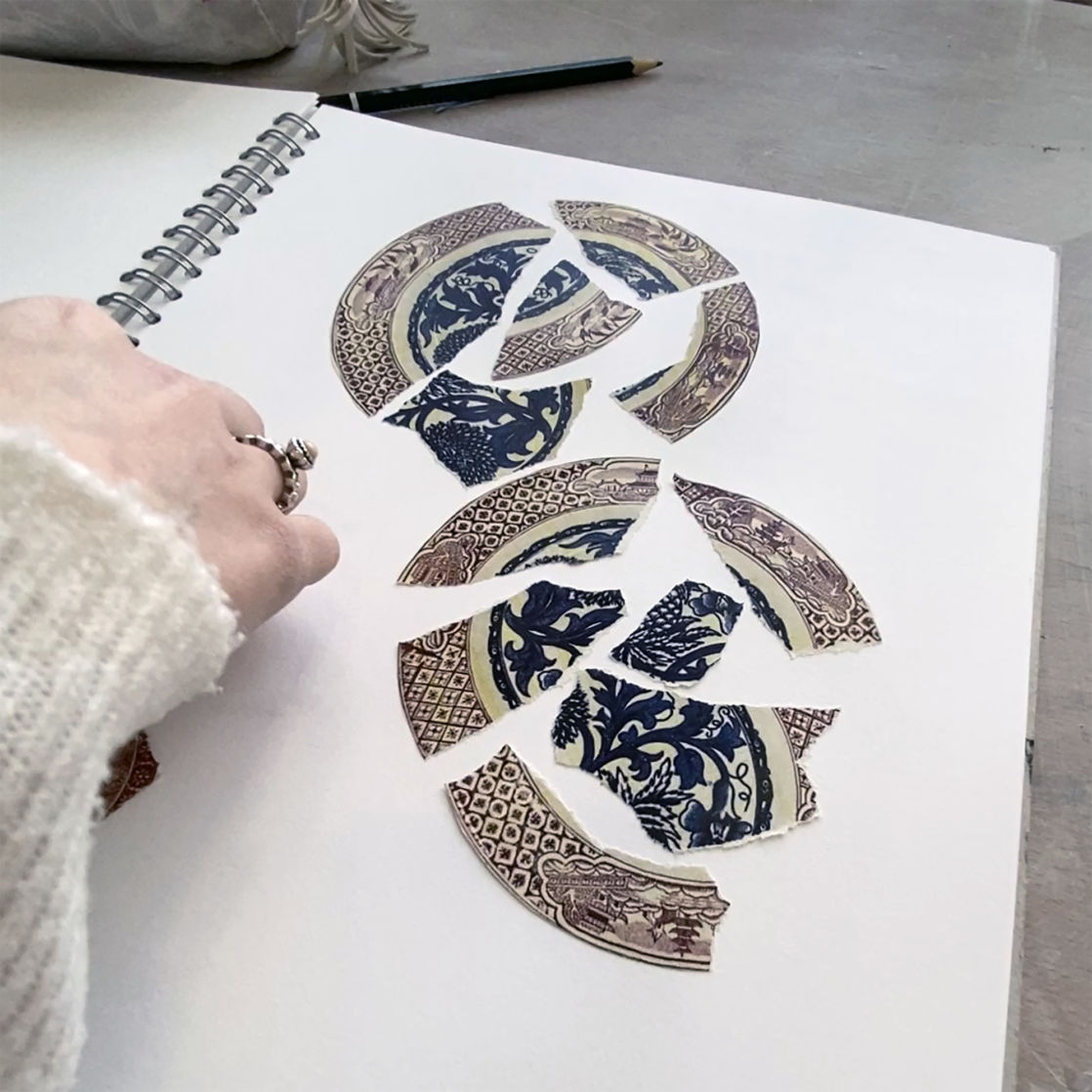
Glasgow City College
The students’ work provides a vibrant and hopeful element to the display as it reveals how Scotland’s pottery heritage can have an active and vital role in skills development, unlocking the potential of the lost practices involved in Scotland’s industrial pottery industry for education and learning, and hinting at future possibilities for community regeneration and place making.
The exhibition is part of a wider initiative to advocate for a dedicated Scottish Pottery Museum to celebrate
and recognise the historic contribution made by the Scottish pottery industry to the country’s tangible and intangible cultural heritage. Acknowledging, researching and reviving an interest in this incredible industry will allow this heritage to become an asset for knowledge creation, skills development and relationship building with local, national and international communities, harnessing the ‘outward-facing spirit’ of Scotland’s pottery heritage and inspiring future generations of ceramic producers.
All images: courtesy of the Scottish Pottery Society; City of Glasgow College.
For more details visit ruthimpey.com
50 Pots: A celebration of Scotland’s Industrial Potteries, July–October, Maryhill Burgh Halls, Glasgow and part of Glasgow Doors Open Day 2022; scottishpotteryexhibition.com; scottishpotterysociety.org.uk